Beauty may be in the eye of the beholder, but when it comes to birds, America is home to some species that just seem to capture every birdwatcher’s heart!
With colorful plumage, adorable features, and fun and entertaining behaviors, these feathered creatures have earned their place as some of the cutest birds in the country.
The Northern Cardinal
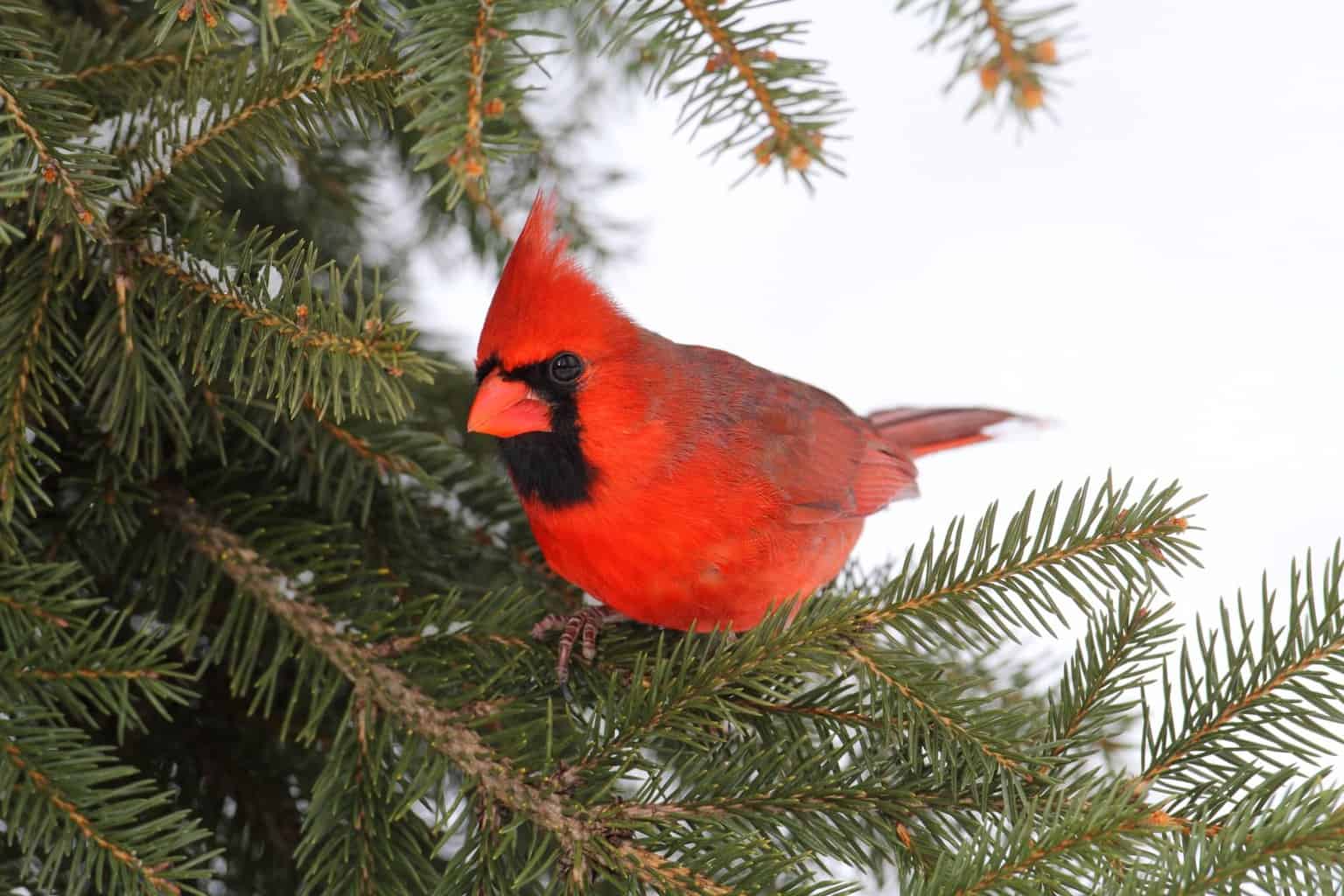
The Northern Cardinal is a striking bird known for its vibrant red plumage and distinctive crest. Found across much of North America, this species is adored for its melodious song and striking appearance.
The male cardinal’s crimson feathers and black mask create a captivating contrast, making it an easily recognized and well-loved bird.
While less striking than the male, the female cardinal is undeniably lovely as well, with brown plumage, red accents, and a sharp crest. Together, they make one stylish couple!
Cardinals will visit almost any feeder, but they particularly love sunflower seeds.
The American Goldfinch
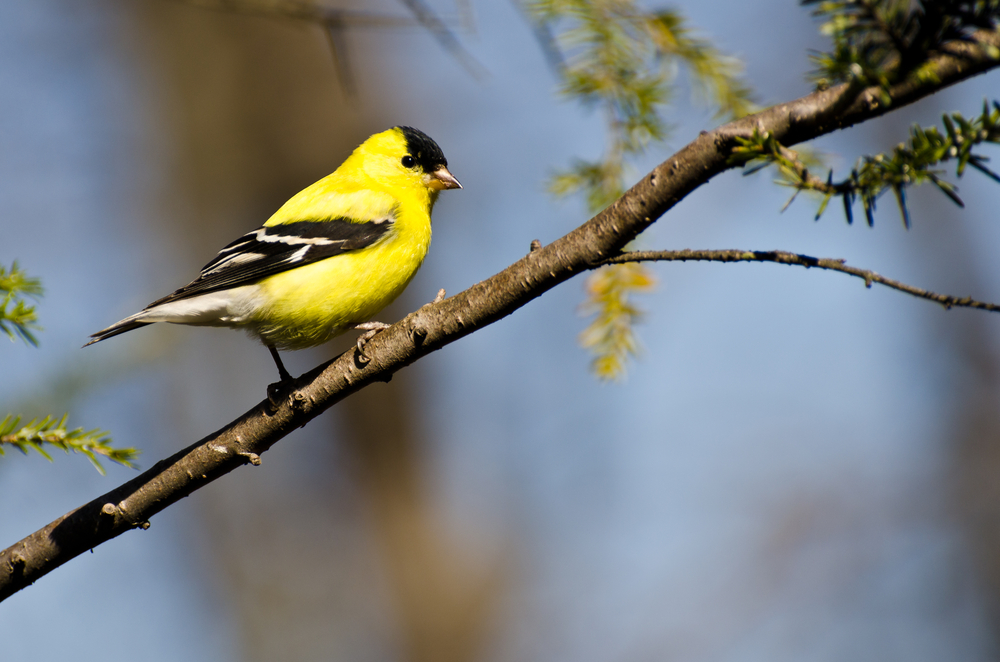
The American Goldfinch is a small songbird that brings a splash of sunshine wherever it goes.
Breeding males sport bright yellow plumage during the summer months, while females are a duller yellow. In the winter, they’re brown with blackish wings as they flock to your feeders.
These adorable birds are often seen perched on flowers or swaying on slender branches.
Their delightful chirps and acrobatic flight patterns add to their charm, making them a favorite among birdwatchers.
The Black-Capped Chickadee
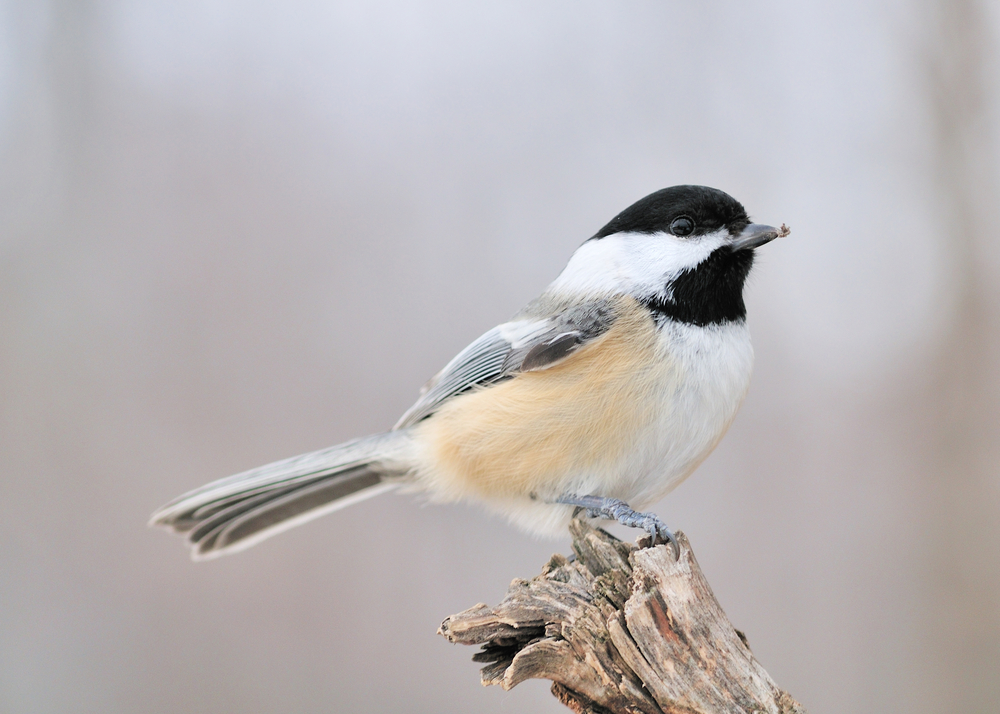
Known for their friendly, curious nature and distinctive “chick-a-dee-dee-dee” call, Black-Capped Chickadees are a common sight in woodlands and backyards throughout America.
With their black cap, white cheeks, and gray wings, these small birds exude cuteness. Their large heads and tiny bodies add to their adorable appearance.
These tiny birds’ curious and playful behavior, along with their ability to eat from a person’s hand, makes them a beloved species among bird lovers.
The Tufted Titmouse
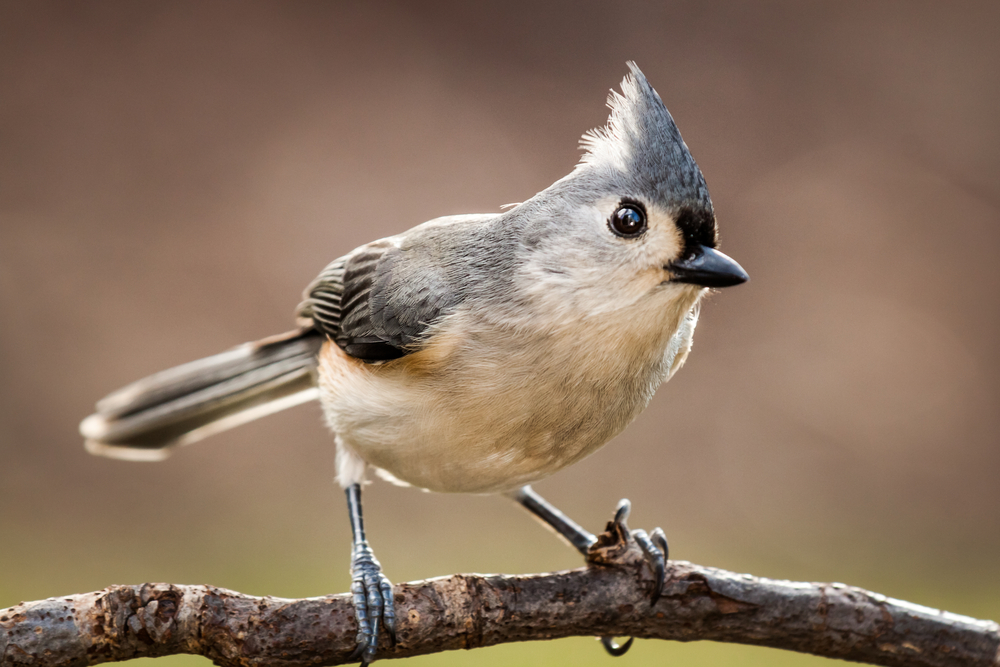
The Tufted Titmouse is a cute and common forest-dweller with a stout gray body, a white underside, a peach accent near the wings, and a sharp crest.
These birds have a lively personality, hopping with agility from branch to branch and hoarding seeds from your feeders.
Their cheerful “peter peter peter” calls and friendly nature make them favorite visitors to bird feeders.
The Mountain Bluebird

Male Mountain Bluebirds are a striking sky-blue in color, making them a treat to spot against the wide-open spaces of their preferred habitats. These birds can be found in the prairies and other open areas of the West, and they’re happy to occupy human-altered spaces, too.
These birds pounce on their insect prey from above, looking like a tinier and cuter Kestrel.
Keep your eyes peeled for these birds when driving in open, rural country! They’re not shy of humans and can often be seen perched on treetops and fence posts.
The Yellow Warbler
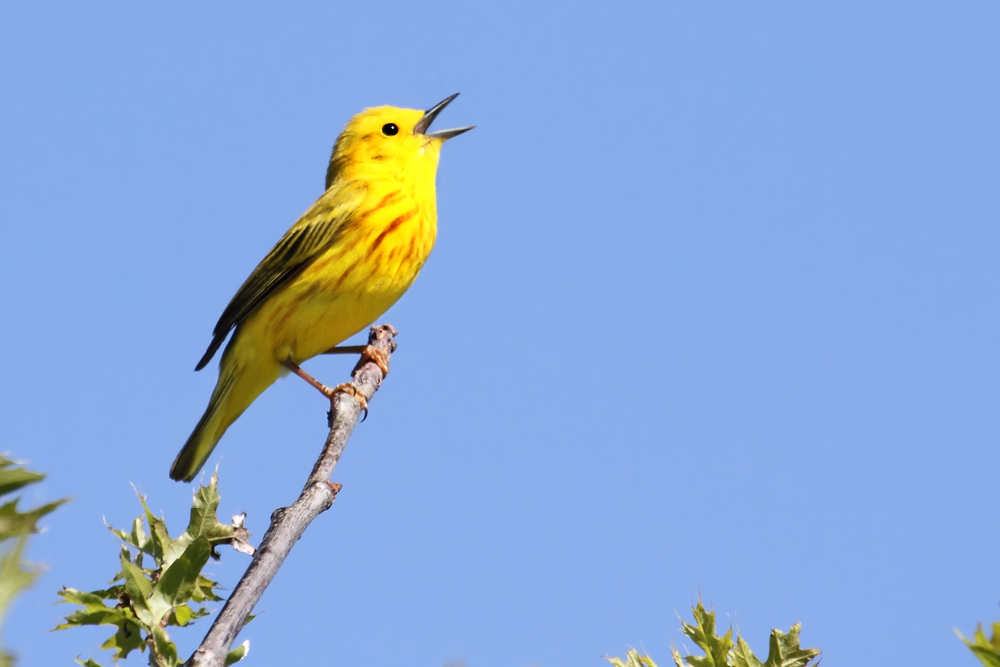
Since they eat mostly insects, it’s unlikely that you’ll get a glimpse of a Yellow Warbler at your backyard seed feeder.
Instead, you might spot this small, bright yellow bird hopping along the branches of shrubs and trees as they hunt for insects.
Females and juveniles are less vibrant, with pale yellow plumage, but the males are egg-yolk-yellow and easy to spot. Keep your eyes open, and you’re likely to see this lovely bird in shrubs and thickets all across North America.
The Downy Woodpecker
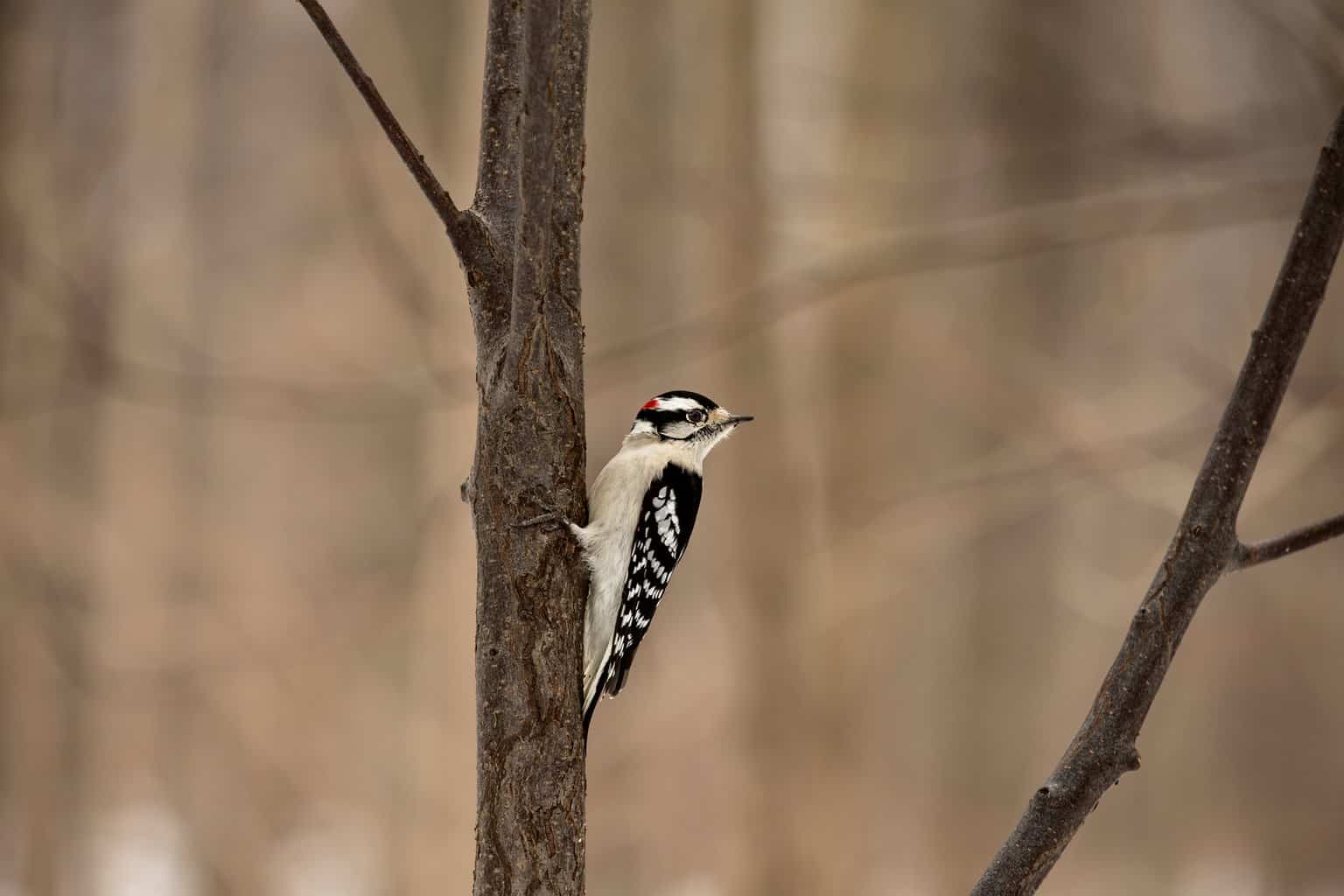
At around two-thirds the size of the Hairy Woodpecker, the Downy Woodpecker is the smallest woodpecker in North America.
It’s also the most likely woodpecker to visit your backyard feeders, where it prefers suet but will eat black oil sunflower seeds, peanuts, and millet as well.
You’ve probably heard a woodpecker drumming against a tree, but most people don’t know that this is their version of a birdsong! When they’re actually digging around for food, they’re quite quiet.
The Ruby-Crowned Kinglet
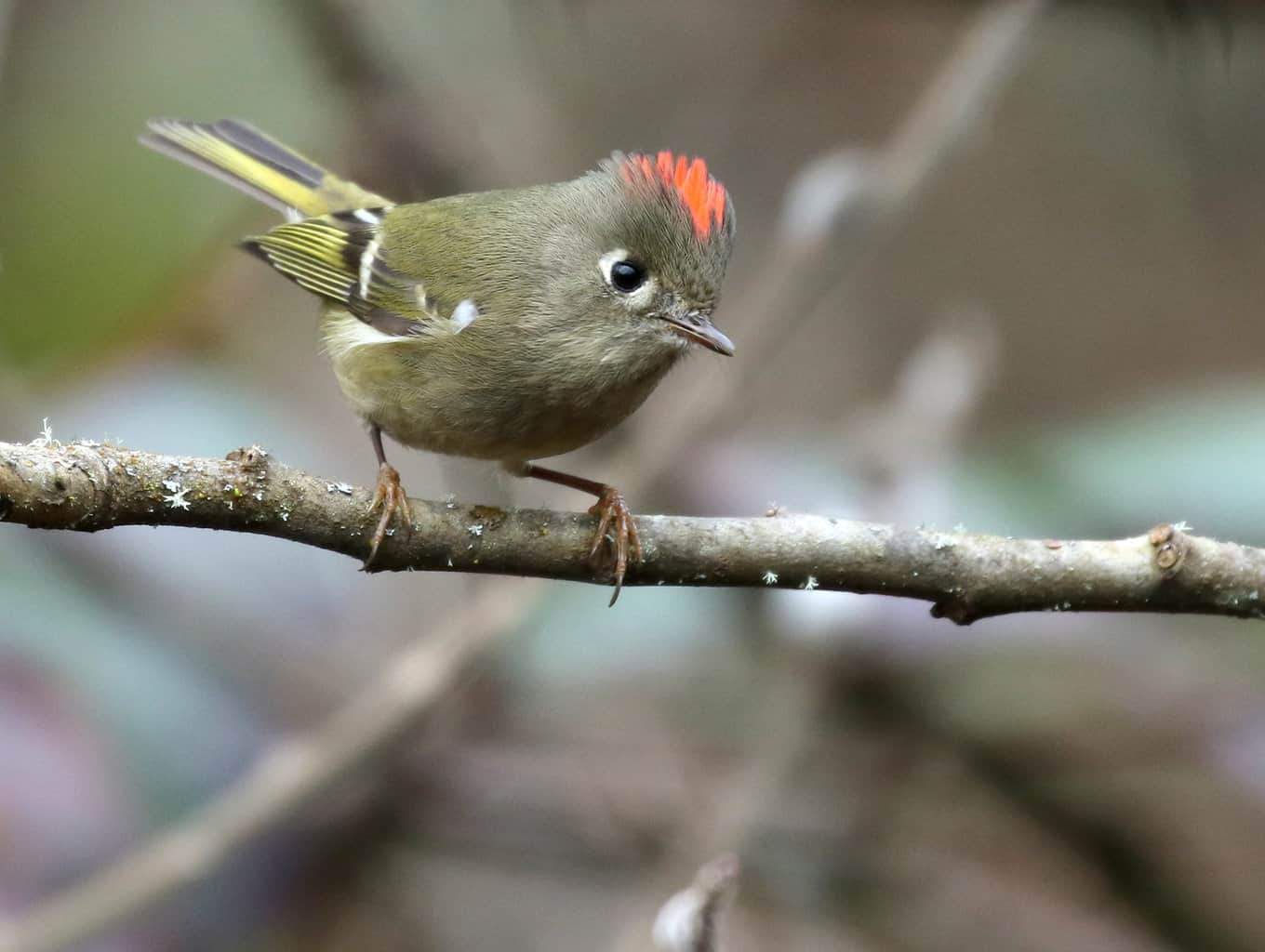
The tiny, energetic Ruby-Crowned Kinglet can be found flitting swiftly from branch to branch in trees and shrubs.
This olive-colored bird is quite tiny, at just 3.5 to 4.3 inches in length. Its namesake ruby-colored crown is not always visible, but the shock of bright color is always a treat to spot.
To identify this bird when the crown is hidden, look for the flicking motion of its wings, a white ring around the eye, and its small size.
The Carolina Wren

Carolina Wrens are small brown birds with a distinct white stripe that gives the appearance of a very stern eyebrow. This characteristic, along with their upright tail, makes them easy to distinguish.
The male sings a loud and distinct song that can sound like, “teakettle, teakettle.” They defend their territory with constant singing. These cavity nesters are happy to take up residence in any old flower pot or other snug space – in fact, one pair nested beneath the lettuce in my porch gardening container this year!
The Painted Bunting
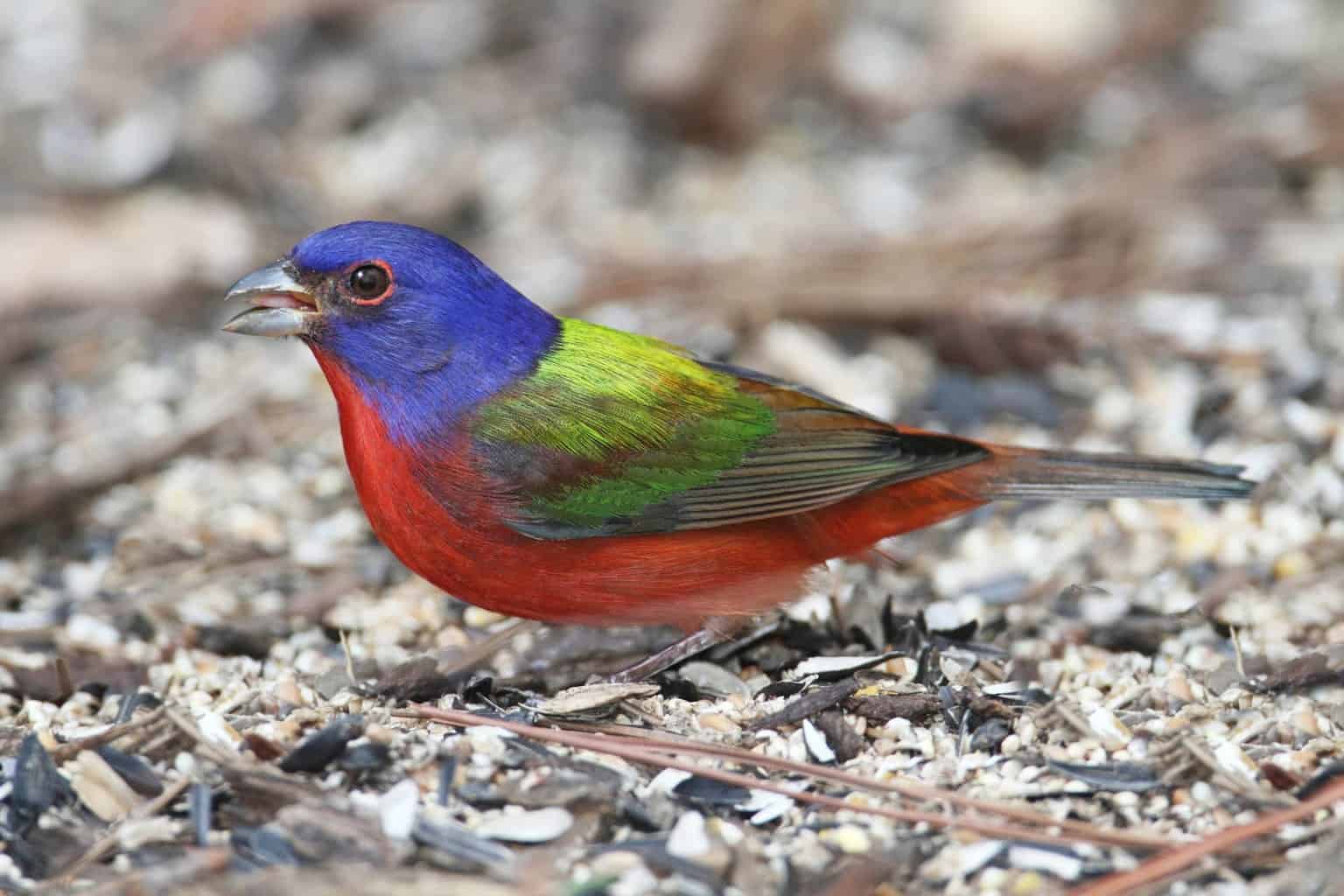
One of the most colorful and eye-catching birds in America, the Painted Bunting is always a joy to spot.
The male is decked out in a vibrant combination of blue, green, and red plumage, while the immature male and female, with their bright green plumage and pale eyering, are also distinctive.
These small birds enjoy low, dense, brushy habitats, and are more likely to visit feeders in yards with this type of plant growth.
The American Kestrel
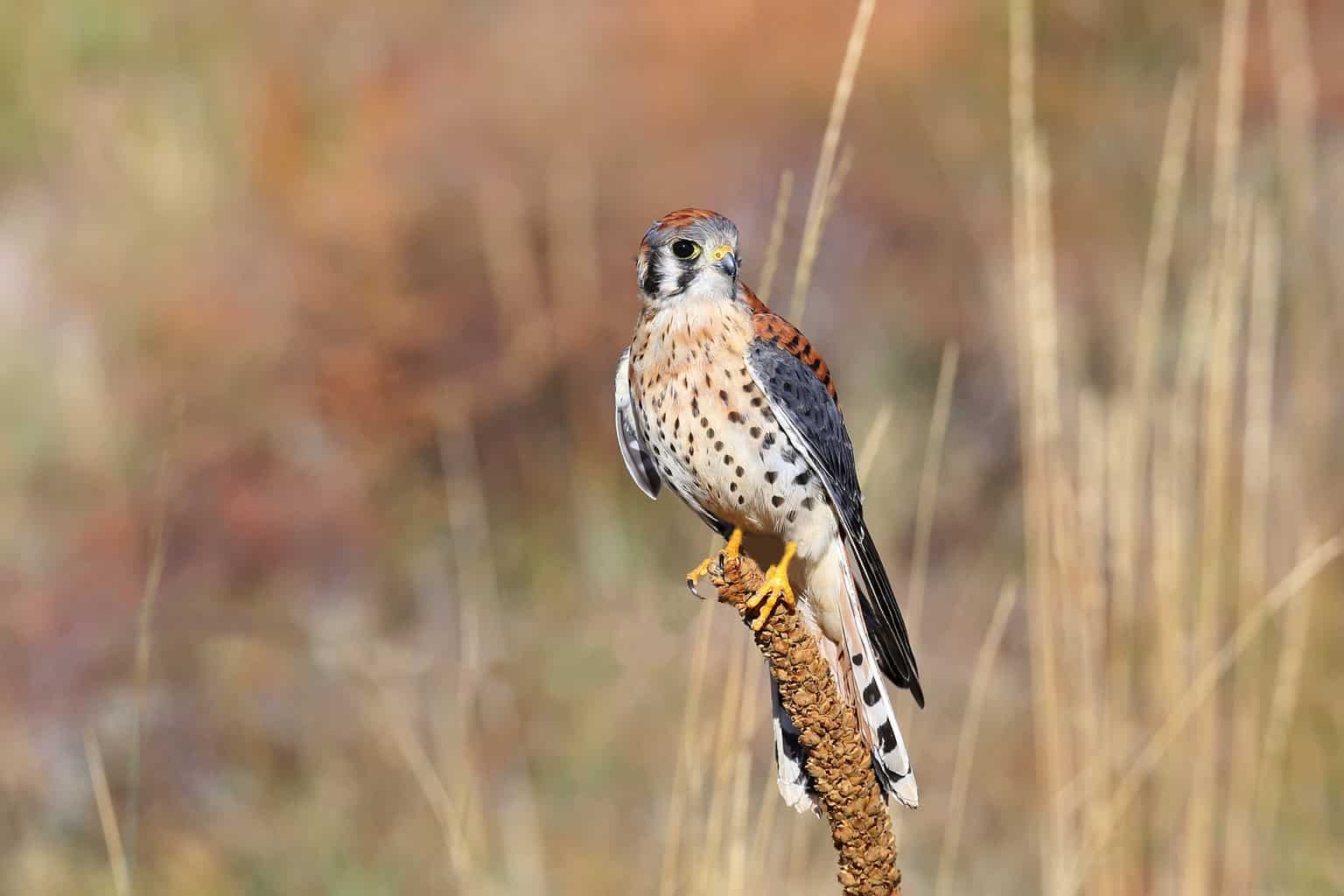
The American Kestrel is the smallest falcon in North America, and the combination of its smaller size and its agile flight set this bird apart as one of the cutest in the region.
With its rusty-red back, slate-blue wings, and white and black markings, the American Kestrel is especially colorful for a raptor.
These birds of prey are adept hunters, often seen hovering in mid-air before diving to capture their prey with precision. However, as the smallest birds of prey, they’re also at risk of becoming dinner for larger birds such as hawks, crows, and Barn Owls.
Ruby-Throated Hummingbird
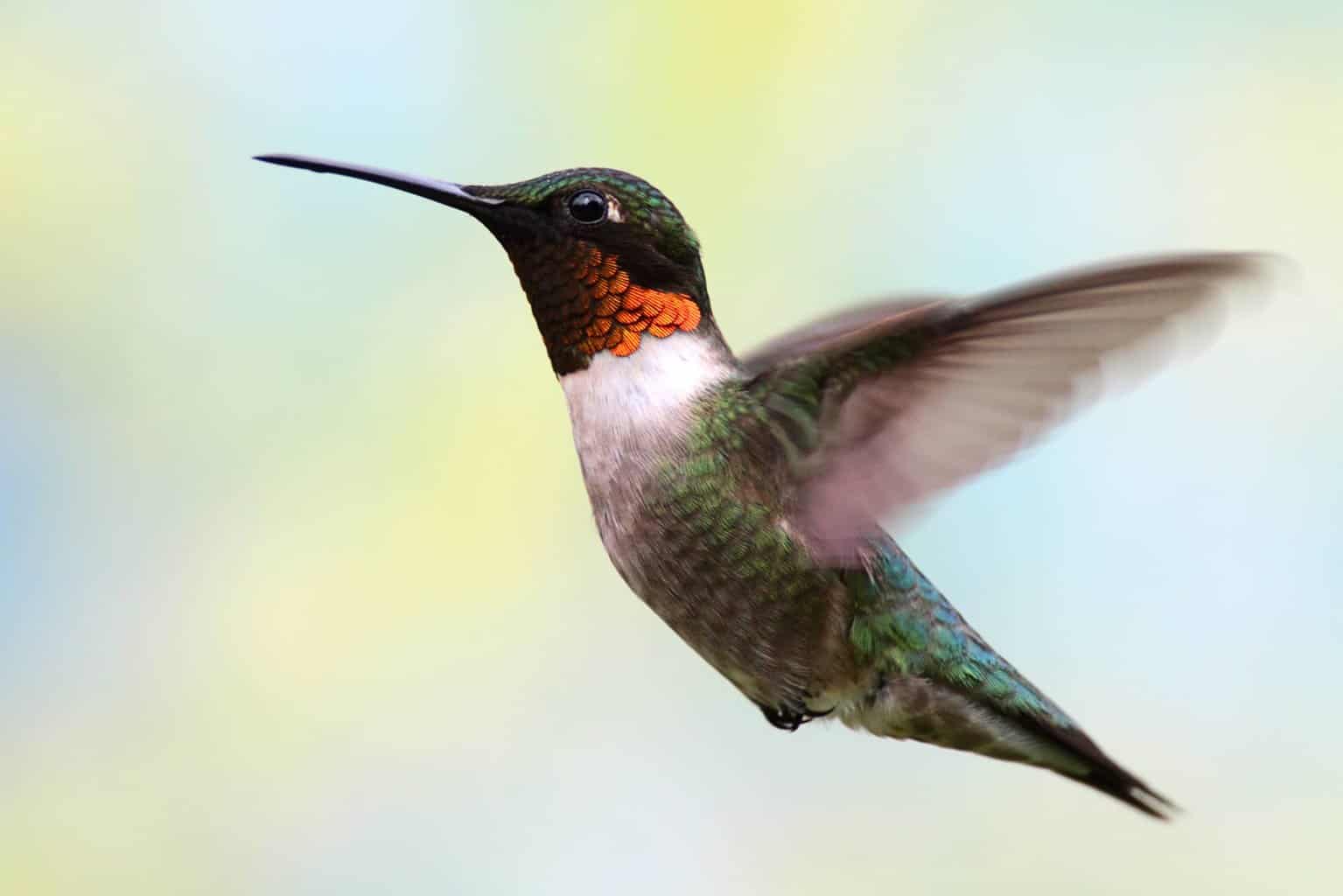
Ruby-Throated Hummingbirds are a favorite of backyard birdwatchers who set up nectar feeders to attract these eye-catching birds.
With iridescent emerald feathers and a shining red throat for males, these birds look like flying jewels. Attract them by hanging nectar feeders and planting tubular flowers, but don’t miss your chance to observe their flight; by fall, these beautiful birds will be headed back to Central America.
The White-Breasted Nuthatch
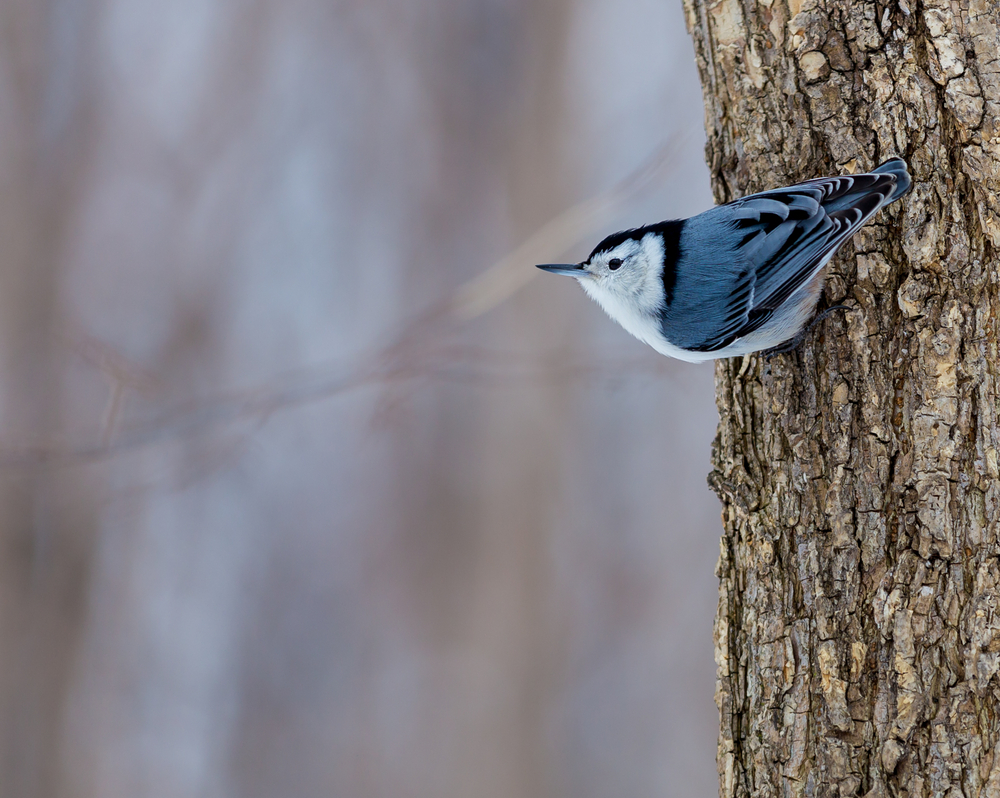
The White-Breasted Nuthatch is the largest nuthatch, but still quite a small bird, at just 5.1 to 5.5 inches.
Look for a blue-gray back, black cap, and distinctive white breast, sometimes with chestnut on the lower belly. They can be found along tree trunks and large branches, where they probe for insects with their straight beaks.
To attract these birds to your feeder, supply large seeds like sunflower seeds and peanuts.
Frequently Asked Questions
How Can I Attract These Birds to My Backyard?
Providing a variety of food sources such as seeds, suet, and nectar, along with suitable shelter and water, can attract these beautiful birds to your backyard.
Are These Birds Endangered?
While some bird species face conservation challenges, none of the species mentioned in this article are currently classified as endangered.
Can I Keep These Birds as Pets?
It is important to remember that these birds are wild animals and are best appreciated in their natural habitats. Keeping them as pets is not recommended and may be illegal in many jurisdictions.

